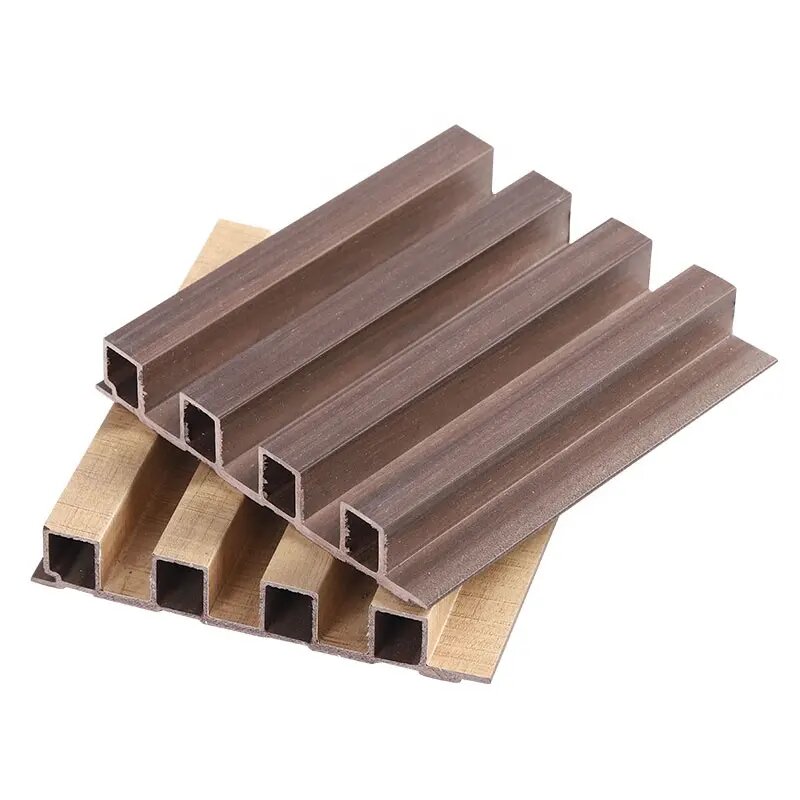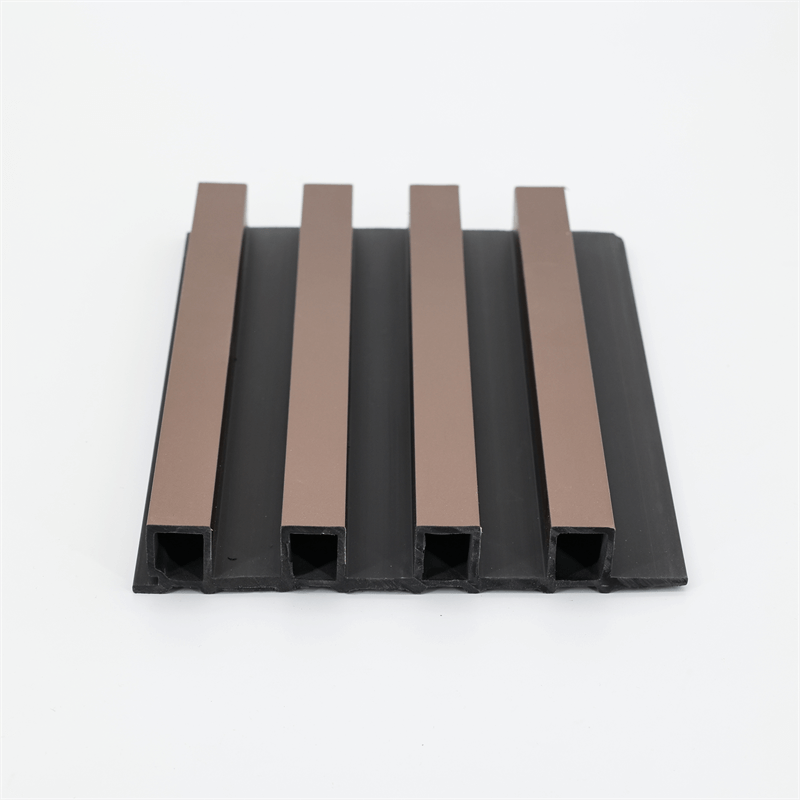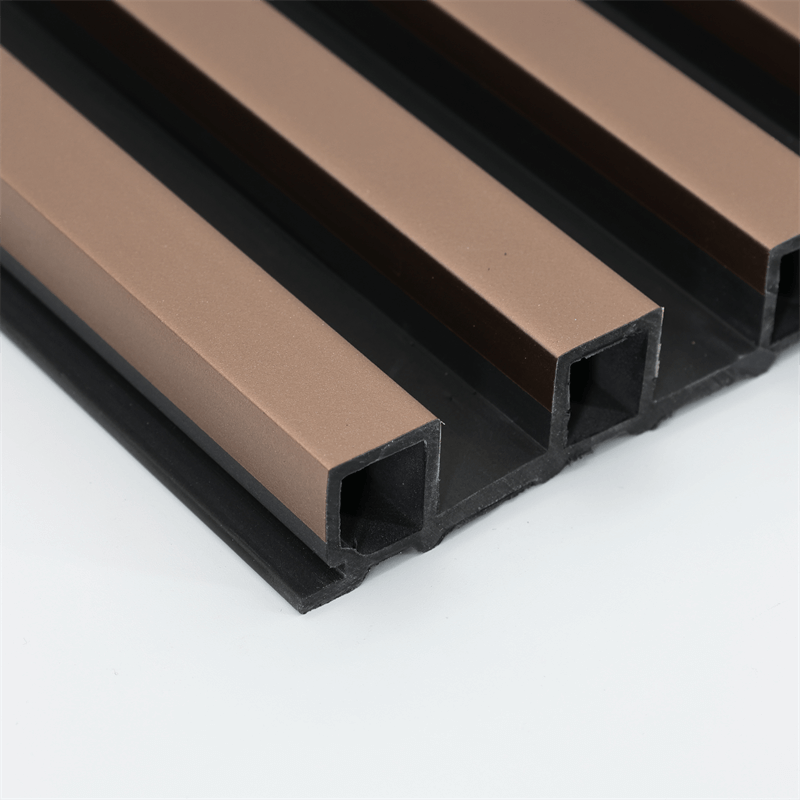Choosing the right wall material is a crucial decision in any construction or renovation project. Traditionally, materials such as wood, gypsum, brick, or ceramic tiles have been widely used.
However, in recent years, wood-plastic composite (WPC) wall panels have emerged as a compelling alternative. These panels offer a unique combination of aesthetics, durability, sustainability, and cost-effectiveness.
This essay compares WPC wall panels with traditional wall materials, exploring their characteristics, performance, maintenance requirements, and overall value to determine which is the better choice for various applications.

I. Aesthetics and Design Options
Aesthetics play a significant role in the selection of wall materials, as they contribute to the overall ambiance and visual appeal of a space.
Both WPC wall panels and traditional materials offer distinctive aesthetic qualities, but they differ in terms of design options and versatility.
Traditional Materials: Traditional wall materials like wood, gypsum, or brick have their own inherent beauty and charm.
Wood exudes warmth and natural appeal, while gypsum and brick offer a sense of solidity and authenticity.
These materials are often chosen for their classic or rustic aesthetics, blending well with traditional or heritage-themed designs.
WPC Wall Panels: WPC wall panels provide a wide range of design options that can replicate the appearance of natural materials while offering added advantages.
These panels can mimic the look of wood, stone, or brick, providing the desired aesthetic without the drawbacks associated with traditional materials.
Additionally, WPC panels can be customized with different colors, textures, and patterns, allowing for versatile design expressions that suit modern, contemporary, or even futuristic aesthetics.
The ability of WPC panels to offer a combination of aesthetics and functional properties gives them an edge over traditional materials in terms of design versatility.
II. Durability and Performance
Durability is a critical factor to consider when choosing wall materials, as they need to withstand daily wear and tear, moisture, impacts, and other environmental factors.
Comparing the durability and performance of WPC wall panels with traditional materials reveals distinct advantages for each.
Traditional Materials: The durability of traditional wall materials varies depending on the specific material.
For instance, wood can be susceptible to rot, pests, and warping if not properly treated or maintained.
Gypsum is relatively durable but can be easily damaged by impacts or excessive moisture.
Brick is highly durable and can withstand harsh weather conditions, but it may require periodic maintenance to prevent crumbling or deterioration.
WPC Wall Panels: WPC wall panels are engineered for durability and longevity.
Their composite composition combines the natural strength of wood fibers or flour with the protective properties of thermoplastic polymers.
This composition results in panels that are resistant to moisture, rot, pests, and UV radiation. WPC panels do not warp, crack, or splinter, ensuring their structural integrity over time.
Their high impact resistance makes them suitable for high-traffic areas, and their resistance to fading ensures long-lasting aesthetics.
In terms of durability and performance, WPC wall panels often outperform traditional materials, providing a reliable and low-maintenance solution.
III. Maintenance Requirements
Maintenance is an essential consideration when selecting wall materials, as regular upkeep can impact both the appearance and the lifespan of the walls.
Comparing the maintenance requirements of WPC wall panels with traditional materials reveals significant differences in terms of effort and cost.
Traditional Materials: Traditional wall materials often require ongoing maintenance to preserve their appearance and functionality.
Wood materials may need periodic staining, sealing, or refinishing to protect against moisture and pests.
Gypsum walls may require regular cleaning and occasional patching or repainting to address cracks or surface damage.
Brick walls may need repointing or sealing to prevent water penetration and maintain their structural integrity.
WPC Wall Panels: WPC panels are designed to be low maintenance, requiring minimal care to keep them looking their best.
Unlike wood, they do not need staining, sealing, or refinishing. WPC panels are resistant to moisture, mold, pests, and UV radiation, reducing the risk of damage or deterioration.
Cleaning WPC panels is as simple as regular dusting or occasional wiping with a damp cloth.
The low maintenance requirements of WPC wall panels result in time and cost savings compared to traditional materials, making them a convenient choice for busy environments or long-term investments.
IV. Environmental Impact
Considering the environmental impact of wall materials is becoming increasingly important as sustainability takes center stage in the construction industry.
Evaluating the environmental factors of WPC wall panels and traditional materials reveals contrasting outcomes.
Traditional Materials: The environmental impact of traditional wall materials varies depending on their sourcing, production processes, and disposal methods.
While wood is a renewable resource, the sustainability of its use depends on responsible logging practices and replanting efforts.
Gypsum production requires mining and energy-intensive processes, and the disposal of damaged gypsum walls can contribute to landfill waste.
Brick production involves resource extraction and energy-intensive firing processes, leading to carbon emissions.
WPC Wall Panels: WPC panels offer several environmental benefits. They often incorporate recycled materials, such as wood fibers or flour, reducing the demand for virgin resources.
The use of thermoplastic polymers allows for the recycling and reuse of the panels at the end of their lifespan.
Additionally, WPC panels have a longer lifespan than many traditional materials, reducing the need for frequent replacements and associated waste.
The low maintenance requirements of WPC panels also contribute to reduced environmental impact by minimizing the use of cleaning chemicals or refinishing products.
Overall, WPC wall panels offer a more sustainable choice compared to some traditional wall materials.

In the comparison between WPC wall panels and traditional wall materials, both options have their own unique strengths and considerations.
WPC panels provide design versatility, durability, low maintenance requirements, and environmental benefits that make them a compelling choice for many applications.
Traditional materials have their own aesthetic appeal, but they may require more ongoing maintenance and can have a higher environmental impact.
Ultimately, the better choice depends on the specific needs, priorities, and constraints of a project.
However, considering the overall performance, ease of maintenance, and sustainability, WPC wall panels often emerge as the superior choice for those seeking a modern, durable, and environmentally conscious solution.
In conclusion, when comparing WPC wall panels to traditional wall materials, it becomes clear that WPC panels offer several advantages that make them a better choice for many applications.
The design options and versatility of WPC panels allow for a wide range of aesthetic expressions, giving businesses the freedom to create unique and visually appealing spaces.
Their durability and performance outshine many traditional materials, providing resistance to moisture, impacts, and UV radiation, ensuring long-lasting structural integrity and aesthetics.
One of the most significant benefits of WPC wall panels is their low maintenance requirements.
Unlike traditional materials that may require regular staining, sealing, or repainting, WPC panels only need occasional cleaning, saving time and reducing costs associated with ongoing maintenance.
Additionally, the environmental impact of WPC panels is often lower than that of traditional materials.
With the incorporation of recycled materials and the potential for recycling at the end of their lifespan, WPC panels contribute to sustainable practices and the reduction of waste.
However, it is essential to consider the specific needs and constraints of each project when making a decision.
Traditional wall materials still have their place and can offer a classic or rustic aesthetic that some may prefer.
Additionally, regional availability, cultural preferences, and budgetary considerations may influence the choice of wall materials.
Overall, WPC wall panels present a compelling alternative to traditional materials, offering a balance of aesthetics, durability, low maintenance, and sustainability.
Whether it is for commercial spaces, residential applications, or public buildings, the versatility and performance of WPC panels make them a smart and practical choice.
By choosing WPC panels, businesses and individuals can create visually stunning and long-lasting spaces while contributing to sustainable and environmentally conscious construction practices.



